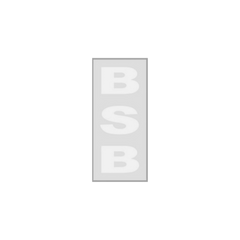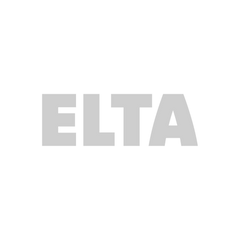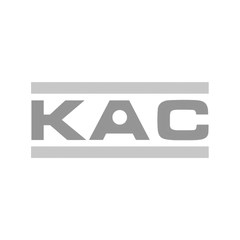Bestsellers
Shop All
- Best Seller
SMART Chain Actuator 380mm White
From £41.32 excl. VAT£52.68 excl. VATUnit price excl. VAT /UnavailableActulux HCV Door Drive 90° 500N/600mm - 24VDC (1.4A) 318062 SLIDER DRIVE
£541.69 excl. VATUnit price excl. VAT /UnavailableD+H Chain Actuator, 24v, 600mm, 250N
£269.23 excl. VATUnit price excl. VAT /UnavailableMowin LIWIN L40 SLIM-600mm Chain Actuator 24V
£179.96 excl. VAT£198.49 excl. VATUnit price excl. VAT /UnavailableD+H KA66/800-TW1 Chain Actuator Drive 24v DC Twin 800mm 300N
£976.92 excl. VATUnit price excl. VAT /UnavailableD+H BSY+ Chain Drive Set 24V, 2x 300N, 800mm
£1,267.69 excl. VATUnit price excl. VAT /UnavailableD+H DDS 54 Door Opener Drives, 24v, 500mm, 500N
£684.62 excl. VATUnit price excl. VAT /UnavailableD+H PLP Chain Drive 24v, 500N, 800mm
£655.38 excl. VATUnit price excl. VAT /Unavailable- From £361.54 excl. VATUnit price excl. VAT /Unavailable
Actulux HCV Door Drive 90° 500N/600mm - 24VDC (1.4A) 318061 ROLLER DRIVE
£510.30 excl. VATUnit price excl. VAT /UnavailableD+H KA Chain Drive, 24v, 800mm
£392.31 excl. VATUnit price excl. VAT /UnavailableTOPP C40 Window Chain Actuator 500mm
£229.99 excl. VATUnit price excl. VAT /UnavailableSomfy Centralis Indoor Receiver RTS
£124.92 excl. VATUnit price excl. VAT /UnavailableSomfy Transmitter Remote Control for ACK actuator
£53.94 excl. VATUnit price excl. VAT /UnavailableD+H VCD Bracket Set, Frame Mounting, Inwards Opening
£38.46 excl. VATUnit price excl. VAT /Unavailable- New In
D+H KA Chain Actuator Brackets Inwards Opening
£36.92 excl. VATUnit price excl. VAT /UnavailableD+H KA Bracket Set (Outwards Opening)
£27.69 excl. VATUnit price excl. VAT /UnavailableD+H CDC Bracket Set (Outwards Opening)
£24.62 excl. VATUnit price excl. VAT /UnavailableTOPP ACK5 Actuator Frame Adjustment Pin
£4.89 excl. VATUnit price excl. VAT /Unavailable- £15.99 excl. VATUnit price excl. VAT /Unavailable
TOPP ACK5 Vertical Mounting Bracket
£10.02 excl. VATUnit price excl. VAT /UnavailableFAST Spindle Linear Actuator 500N S=300 230V
£66.01 excl. VAT£83.92 excl. VATUnit price excl. VAT /UnavailableACK5 Fallback Bracket Bottom Hung Windows
£11.26 excl. VATUnit price excl. VAT /Unavailable
Learn More About Actuators
General Information
General Information
Actuators are key components in automated building systems, widely used in ventilation, natural smoke and heat exhaust ventilation systems (NSHEVs), façade automation, and controlled access applications. They convert electrical energy into linear or rotary motion, enabling windows, vents, dampers, and doors to be opened and closed safely and reliably.
Fire safety and smoke control:
In life-safety systems, actuators can play a critical role by automatically opening smoke vents, skylights, or dampers when triggered by a fire alarm. This supports smoke control strategies designed to aid evacuation and firefighting. Where used in smoke and heat exhaust ventilation systems (SHEVS), actuators must comply with the requirements of BS EN 12101-2 (for NSHEVs) or other relevant parts of the EN 12101 series (such as EN 12101-8 for smoke control dampers). Importantly, certification should be supported by a Declaration of Performance (DoP) from a notified test body.
Performance and reliability:
Actuators intended for fire and smoke applications must maintain operation under elevated temperatures and in demanding environments. Certification testing under EN 12101-2 provides assurance that the actuator can perform in these conditions.
For actuators not designated for smoke control, compliance is instead focused on electrical safety, electromagnetic compatibility (EMC), durability and environmental protection. Typical requirements include conformity with:
- BS EN 60335-1 (safety of electrical appliances) or BS EN 60204-1 (safety of machinery – electrical equipment).
- BS EN 61000 series (EMC).
- BS EN 60529 (Ingress Protection – IP rating).
- EN 60730-2-14 (automatic electrical controls for household and similar use – electric actuators).
Manufacturers often conduct cycle and endurance testing to demonstrate long-term reliability. Where actuators form part of a tested window or façade system, they may also fall under the scope of BS EN 14351-1 (Windows and doors – product standard).
Regulatory framework:
Compliance with UK Building Regulations should be checked at design stage:
- Approved Document B (Fire Safety) for life-safety systems.
- Approved Document F (Ventilation) for airflow and indoor air quality.
For projects in the UK and EU, actuators that fall under the scope of the Construction Products Regulation (CPR) must carry appropriate CE or UKCA marking, supported by third-party testing. Where actuators incorporate electric motors or drives, energy efficiency may also be influenced by Part L (Conservation of Fuel and Power) and the EU Ecodesign Directive, depending on product classification.
Engineering considerations:
When selecting actuators, engineers should:
- Verify stroke length, chain/rod strength, and torque against the required aerodynamic free area (AOV opening) or vent geometry.
- Confirm compatibility with the project’s fire strategy and referenced standards (e.g. BS EN 12101-2, BS EN 12101-8, BS 9999, and Approved Document B).
- For non-smoke applications, check compliance with relevant electrical and durability standards and ensure IP ratings and EMC conformity match the installation environment.
- Ensure adequate maintenance access and integration with control panels, building management systems (BMS), and fire alarm interfaces where required.
System testing for AOVs:
It is important to note that actuators used in smoke control systems are not certified in isolation. Under BS EN 12101-2, compliance applies to the complete natural smoke and heat exhaust ventilator (NSHEV) assembly, meaning the actuator must be tested in combination with the specific window, vent, or façade profile. Substituting components outside of the tested configuration can invalidate compliance and may lead to rejection by building control. For this reason, specifiers should ensure that both the actuator and the window unit are supplied as part of a tested and certified system.
Frequently Asked Questions
What is an actuator?
What is an actuator?
AOV actuators are electromechanical devices that move or control a mechanism or system. In the context of building automation and smoke control, actuators are typically used to automatically open and close windows, vents, or louvres. Powered by electricity, they convert electrical energy into precise linear or rotary movement — providing intelligent control over airflow and smoke ventilation in modern buildings.
What are actuators used for?
What are actuators used for?
Actuators are used to automatically open and close windows, vents, skylights, and dampers. They support everyday ventilation, environmental comfort, and façade automation, and in some systems are also used for smoke and heat exhaust ventilation (SHEVS). Where actuators form part of an automatic opening vent (AOV) for smoke control, they must be tested and certified together with the window or vent assembly in accordance with BS EN 12101-2. For general ventilation, actuators are selected based on stroke, force, and electrical compatibility, without smoke certification being required.
What are the most common types of actuators?
What are the most common types of actuators?
The most widely used type — and our bestselling model — is the electric chain actuator, like the TOPP ACK5 Chain Actuator – 400mm. This compact, high-performance unit delivers reliable, smooth motion and is ideal for both natural ventilation and smoke vent applications. It's easy to integrate with fire alarm systems, control panels, or Building Management Systems (BMS).
Other common types include:
- Linear actuators – ideal for vertical stroke movements
Twin chain actuators – suited for larger or heavier vents
Where would you use an actuator?
Where would you use an actuator?
Actuators are used in any building where automated control of airflow or emergency smoke ventilation is required. Common applications include:
- Commercial offices and retail spaces
- Schools and universities
- Apartment stairwells and corridors
- Warehouses and data centres
- Green buildings and passive ventilation schemes
They’re often installed in roof hatches, high-level windows, AOVs (Automatic Opening Vents), and louvres, where manual operation is impractical.
What must engineers verify about stroke length and clear opening requirements when specifying a ChainActuator?
What must engineers verify about stroke length and clear opening requirements when specifying a ChainActuator?
Engineers should confirm that the actuator stroke length and force provide the clear opening area required by the project’s ventilation or smoke control strategy. For smoke ventilation systems, this should be verified against BS EN 12101-2 (for windows/vents) or other relevant standards, as defined in the fire strategy. Commissioning should demonstrate correct stroke, torque, and fail-safe operation, with results documented in O&M records.
This answer references a standard(s) that are relevant. There may however be many
other standards that need to be considered. We recommend you refer to our
technical bulletins for more detailed references to applicable standards but
also you should check with your professional consultants and the approving
authorities prior to purchasing to check compliance.
View our Actuators Technical Bulletin for more information.
During installation, how should contractors deal with force output vs. sash weight or damper torque on a ChainActuator?
During installation, how should contractors deal with force output vs. sash weight or damper torque on a ChainActuator?
Contractors must verify that the actuator force output is sufficient to operate the sash or damper without overloading. On-site functional tests should confirm smooth
travel and reliable closing under load.
Which standards or guidance apply to synchronised multi-point drive systems for ChainActuators?
Which standards or guidance apply to synchronised multi-point drive systems for ChainActuators?
Where multiple actuators are fitted to one window or vent, the control system must ensure synchronisation to prevent frame distortion and to provide reliable feedback signals. For smoke ventilation applications, compliance must be demonstrated with BS EN 12101-2 (for the tested vent + actuator assembly) or BS EN 12101-8 (if used with smoke control dampers). In the UK, BS 9999 and Approved Document B may also be referenced as part of the project’s fire strategy.
This answer references a standard(s) that are relevant. There may however be many
other standards that need to be considered. We recommend you refer to our
technical bulletins for more detailed references to applicable standards but
also you should check with your professional consultants and the approving
authorities prior to purchasing to check compliance.
View our Actuators Technical Bulletin for more information
What are common mistakes with end limit setting and feedback signals on Chain Actuators, and how can they be avoided?
What are common mistakes with end limit setting and feedback signals on Chain Actuators, and how can they be avoided?
Errors include failing to calibrate limits, misreporting of open/closed status, and
lack of torque protection. To avoid these, commissioning must include full
limit checks, feedback verification, and functional alarm testing.
How does wind load and façade pressure impact commissioning and handover for ChainActuators?
How does wind load and façade pressure impact commissioning and handover for ChainActuators?
Chain actuators must be sized to overcome
façade wind pressures. Commissioning should confirm reliable operation under
simulated loads, and evidence of compliance should be included in the handover
pack.
What site constraints affect push vs. pull orientation for Chain Actuators?
What site constraints affect push vs. pull orientation for Chain Actuators?
Space, hinge placement, and frame strength determine whether push or pull is feasible.
Selecting the wrong orientation can reduce efficiency or damage the frame, so
early coordination is essential.
What evidence should be included in O&M packs for bracket geometry and fixing loads on ChainActuators?
What evidence should be included in O&M packs for bracket geometry and fixing loads on ChainActuators?
Packs should include bracket drawings, fixing specifications, and commissioning evidence showing that loads are safely
transferred. Photographic records and torque settings improve traceability.
In retrofit projects, how does cable routing and segregation change for Chain Actuators?
In retrofit projects, how does cable routing and segregation change for Chain Actuators?
Retrofit work often requires adjusted cable
paths. Cables must remain segregated from high-voltage systems, protected
against damage, and recorded in as-built documentation.
What design issues commonly arise with local overrides and FSCS integration on Chain Actuators?
What design issues commonly arise with local overrides and FSCS integration on Chain Actuators?
Conflicts arise when local controls, fire service switches, and BMS integration are not prioritised. Early design coordination and logic diagrams help resolve signal
hierarchies before commissioning.
How can contractors troubleshoot problems linked to commissioning timings and cycle tests on ChainActuators?
How can contractors troubleshoot problems linked to commissioning timings and cycle tests on ChainActuators?
Troubleshooting should check actuator speed settings, signal timing, and power supply. Repeated cycle tests under load
confirm reliable function before handover.
What must engineers verify about maintenance intervals and lubrication when specifying Chain Actuators?
What must engineers verify about maintenance intervals and lubrication when specifying Chain Actuators?
Engineers must confirm the manufacturer’s
recommended service intervals, lubrication points, and duty cycles. Maintenance
access should be included in the design.
During installation, how should contractors deal with retrofit on existing frames forChain Actuators?
During installation, how should contractors deal with retrofit on existing frames forChain Actuators?
Installers must confirm that existing frames are strong enough to carry loads. Reinforcement may be needed, and fixings must not compromise fire or façade performance.
This answer references a standard(s) that are relevant. There may however be many
other standards that need to be considered. We recommend you refer to our technical
bulletins for more detailed references to applicable standards but also you should
check with your professional consultants and the approving authorities prior to
purchasing to check compliance.
View our Actuators Technical Bulletin for more information
Which standards or guidance apply to IP rating and environment for Chain Actuators?
Which standards or guidance apply to IP rating and environment for Chain Actuators?
The actuator IP rating must match site exposure to dust, moisture, and temperature. External installations require appropriate sealing and protective finishes.
Please refer to the more detailed technical bulletins for references to standards that will apply to selection of IP ratings. Follow manufactures guidance on installation to ensure IP ratings are achieved.
View our Actuators Technical Bulletin for more information
What are common mistakes with noise levels and speed trade-offs on Chain Actuators, and how can they be avoided?
What are common mistakes with noise levels and speed trade-offs on Chain Actuators, and how can they be avoided?
Choosing actuators solely for speed can increase noise levels, which may cause complaints in occupied spaces. The best practice is to balance stroke speed with acoustic performance and project requirements. During commissioning, noise levels and stroke times should be checked to confirm they meet design expectations.
How does obstruction sensing and safety stops impact commissioning and handover for Chain Actuators?
How does obstruction sensing and safety stops impact commissioning and handover for Chain Actuators?
Safety features must be tested to prove they
stop or reverse travel on obstruction. Records of these tests form part of the
handover evidence.
What site constraints affect integration with panels and BMS for Chain Actuators?
What site constraints affect integration with panels and BMS for Chain Actuators?
Constraints include limited cable routes,
control panel space, and segregation of safety wiring. Integration must be
tested to prove correct operation with FSCS and BMS.
What evidence should be included in O&M packs for thermal breaks and mounting details on ChainActuators?
What evidence should be included in O&M packs for thermal breaks and mounting details on ChainActuators?
Details should cover thermal break
performance, fixing methods, and any reinforcement. These must be verified
against design drawings and confirmed in commissioning reports.
In retrofit projects, how does emergency manual release change for Chain Actuators?
In retrofit projects, how does emergency manual release change for Chain Actuators?
Emergency release devices must remain accessible and functional under load. Retrofit conditions may restrict placement, so testing must confirm usability.
What design issues commonly arise with documentation and O&M packs on Chain Actuators?
What design issues commonly arise with documentation and O&M packs on Chain Actuators?
Gaps often occur when actuator settings, test results, or as-built cable drawings are not provided. Collecting these progressively during the project avoids incomplete handovers.
How can contractors troubleshoot problems linked to common installation errors on Chain Actuators?
How can contractors troubleshoot problems linked to common installation errors on Chain Actuators?
Typical issues include misaligned brackets,
inadequate fixings, or damaged cables. Troubleshooting involves visual
inspection, torque checks, and re-testing end limits and feedback.
Do actuators need regular testing?
Do actuators need regular testing?
Yes. In smoke ventilation systems, actuators should be tested in line with maintenance schedules in BS 9999 and the manufacturer’s O&M guidance. Certification to BS EN 12101-2 provides confidence in fire performance, but ongoing site testing helps validate correct operation under real conditions. For comfort ventilation, periodic function tests are also recommended to ensure reliability and occupant safety.




























































